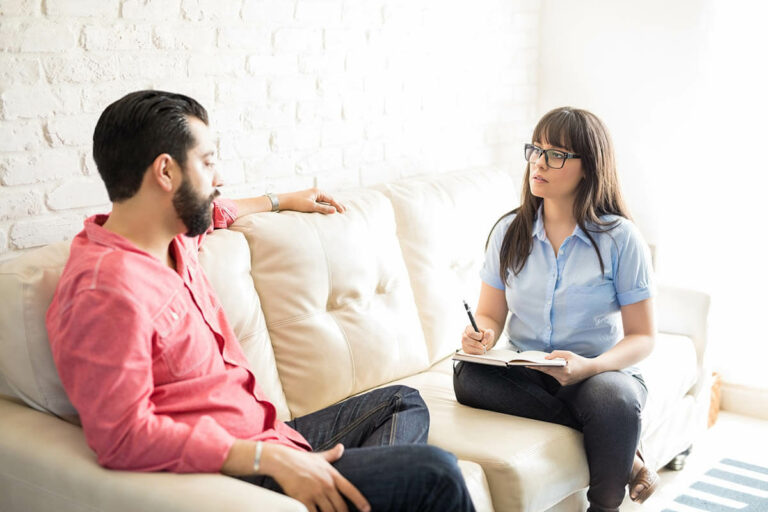The Science Behind Pillows and Their Impact on Sleep Health

A good night’s sleep is crucial for both physical and mental health. But did you know your pillow plays an important role in sleep quality? The science behind pillow design and materials demonstrates how the right pillow can promote proper spinal alignment, alleviate pressure points, enhance breathability and temperature regulation, and even mitigate sleep disorders.
In this article let’s explore the anatomy of pillows and how they interact with the body during sleep.
The Anatomy of a Pillow: Beyond the Fluff
Pillows are more than just a soft place to rest our heads. They play a crucial role in supporting the intricate structures of the head, neck, shoulders, hips, and spine, alleviating or preventing many forms of back, neck, and joint pain. But how exactly does the design of a pillow contribute to this support?
The Core Materials
Pillows come in a variety of core materials like memory foam, latex, down, polyester fiberfill, wool, buckwheat hulls, and more. The core material affects the pillow’s firmness, breathability, durability, and comfort. Memory foam and latex tend to provide more support than down.
The Structure
Contour pillows are shaped to cradle the head and neck. Wedge pillows are triangular and elevate the upper body. Traditional rectangular pillows come in varying heights and degrees of firmness. The structure directly impacts spinal alignment and pressure point relief.
Evolution of Design
From feather-stuffed sacks to memory foam wedges, pillows have come a long way. Modern ergonomic designs cater to individual needs. For example, adjustable foam pillows allow sleepers to customize loft and firmness. Side sleepers may benefit from a thicker pillow that fills the space between the head and mattress to keep the spine aligned while the pillow side sleeping.
Key Point
Pillows play a crucial role in supporting the intricate structures of the head, neck, shoulders, hips, and spine, alleviating or preventing many forms of back, neck, and joint pain.
Source: Author’s Expertise and Experience.
The Connection Between Pillow Design and Sleep Posture
Pillows serve to keep the upper body in alignment during sleep, counterbalancing the body’s points and relieving pressure. The right pillow adjusts to one’s unique shape, curves, and sleeping position to alleviate pressure points. But while alignment is crucial, the material of the pillow also plays a pivotal role in ensuring a good night’s sleep.
Spinal alignment: Back, side and stomach sleepers require different pillow heights and shapes to keep the spine properly aligned. The wrong pillow can overextend or flex the neck.
Pressure relief: The right pillow also cushions pressure points like the shoulders, hips, and head by filling the gap between the mattress and the body. An ill-fitting pillow can cause tossing, turning, and insomnia.
Sleeping position: Side sleepers need a thicker, firmer pillow to fill the space between the head and mattress while back sleepers need a thinner, softer pillow to allow the head to rest comfortably.
Key Point: Pillows serve to keep the upper body in alignment during sleep, counterbalancing the body’s points and relieving pressure. The right pillow adjusts to one’s unique shape, curves, and sleeping position to alleviate pressure points.
Pillow Breathability and Temperature Regulation
Pillow fillings vary in their level of support. For instance, most down or feather pillows offer little structural support compared to pillows filled with firmer materials like polypropylene capsules or polyurethane. This not only affects support but also the pillow’s ability to regulate temperature, ensuring a cool and comfortable sleep environment.
Fill materials: Down and polyester fiberfill conform well but retain heat. Latex, wool, and buckwheat hulls allow more airflow. Cooling gels and phase change materials actively absorb heat.
Moisture-wicking fabrics: Pillow covers made of moisture-wicking fabrics like bamboo rayon or performance fabrics keep sleepers dry by absorbing sweat.
Ventilated designs: Air channels integrated into memory foam or latex pillows enhance breathability. Some pillows have pinholes throughout the core to improve airflow.
Key Point: Pillow fillings vary in their level of support. For instance, most down or feather pillows offer little structural support compared to pillows filled with firmer materials like polypropylene capsules or polyurethane.
The Interplay Between Pillows and Sleep Disorders
For individuals with spinal disorders, the right type of pillow support is especially crucial in helping the spine rest comfortably. Sufficient and restorative sleep is the body’s opportunity to heal itself from the day’s postural, physical, and nervous challenges.
Spinal conditions: The right pillow can alleviate pain from spinal stenosis, herniated discs, scoliosis, and arthritis. An orthopedic pillow promotes alignment.
Sleep apnea: Elevated pillows open airways. Wedge pillows prevent the tongue from obstructing breathing.
Acid reflux: Wedge pillows prevent stomach acid from rising into the esophagus.
Neck pain: Contour pillows provide ergonomic support whether sleeping on the back or side.
Key Point: For individuals with spinal disorders, the right type of pillow support is especially crucial in helping the spine rest comfortably. Sufficient and restorative sleep is the body’s opportunity to heal itself from the day’s postural, physical, and nervous challenges.
Frequently Asked Questions
- How often should one replace their pillow for optimal sleep health?
Experts recommend replacing pillows every 1-2 years, or sooner if they become lumpy or flat. Signs you need a new pillow include neck pain, changes in sleep quality, and allergies. Replace pillows immediately if they have visible signs of damage, stains, or odors.
- Can a pillow alone address chronic neck pain or does it require a holistic approach?
While the right pillow can alleviate some neck pain, chronic neck pain usually requires a holistic treatment plan including posture correction, physical therapy, exercise, massage, and pain management. See a doctor to diagnose the root cause and get professional advice on the best pillow and treatment.
- Are there any scientific studies that prove the superiority of one pillow type over another?
There are few large-scale clinical studies comparing pillow types. However, initial research shows memory foam orthopedic pillows improve neck pain and sleep quality compared to general polyester pillows. Overall, studies emphasize the importance of finding an individualized pillow based on sleeping position and comfort.
Final Thoughts
Proper pillow support is vital for spinal alignment and a good night’s rest. Understanding the materials, structures, and interactions between our pillows and sleeping positions enables us to make informed choices that set us up for sleep success. While more research is needed, the science clearly demonstrates that pillows are far from an afterthought when it comes to our health and well-being.




